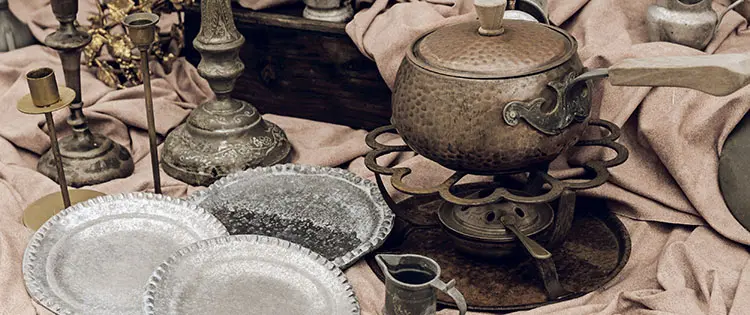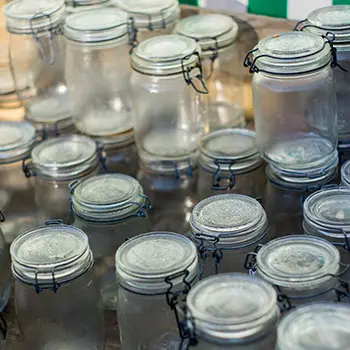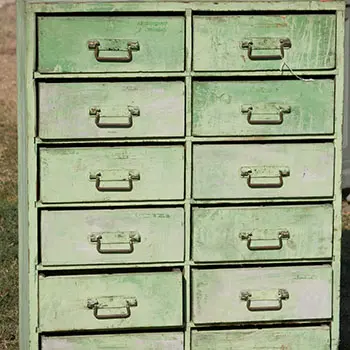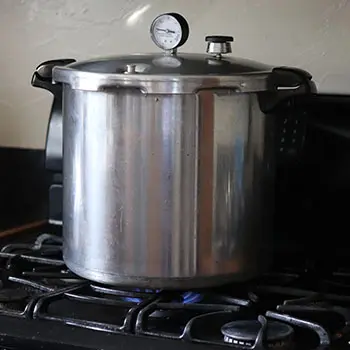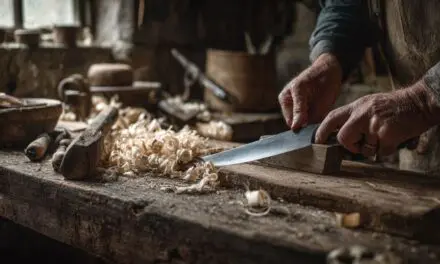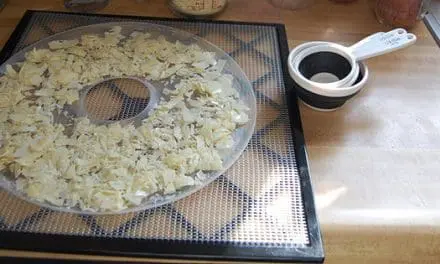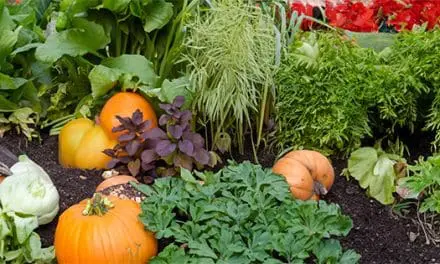Times are tough. Money’s tight. And new gear? It costs an arm and a leg. That’s why I LOVE thrift shops. Yep, you heard me right. I love getting homesteading items from the thrift store.
Those dusty shelves are packed with hidden gems that’ll level up your homestead without draining your wallet.
Forget buying new—here are 10 must-have items you should get:
Cast Iron Cookware From The Thrift Store
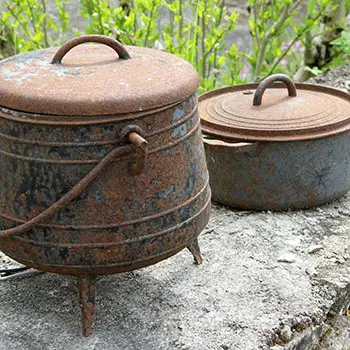
Last week at my local thrift store, I stumbled upon a rusty old cast iron skillet tucked behind a pile of mismatched plates. Most folks would’ve passed it by, but I saw potential. After a bit of TLC, that $5 pan is now the star of my kitchen.
Cast iron isn’t just durable; it’s incredibly versatile as well. I’ve used it for everything from baking crusty sourdough bread to searing fresh-caught trout over a campfire, and even making a delicious apple cobbler with fruit straight from the orchard.
The beauty of cast iron is its ability to retain heat and cook food evenly, making it perfect for everything from frying to baking.
Don’t shy away from rust. A vinegar soak and some steel wool can bring even the saddest-looking skillet back to life, making it as good as new.
With proper care, a cast iron skillet can last for generations, becoming an essential and reliable tool in your homestead kitchen.
Related: How To Restore A Cast Iron You Bought At Garage Sales
Glass Jars
You know what they say – one man’s trash is another man’s treasure. Well, in the homesteading world, those discarded glass jars are your treasure.
I’ve lost count of how many I’ve picked up over the years, but trust me, you can never have too many.
I’ve put my thrifted jars to great use in many ways: canning last summer’s abundant tomato harvest, fermenting homemade sauerkraut (a family favorite), storing dried beans from the garden, and even crafting DIY solar lights for the patio.
Glass jars are perfect for organizing small tools in the workshop, holding homemade jams, or even making homemade gifts like bath salts. They’re a versatile and eco-friendly way to repurpose everyday items and reduce waste.
Gardening Tools
Let’s face it, new gardening tools can get pricey. But here’s a secret: some of the best tools have already seen a season or two.
Last spring, I picked up a wheelbarrow with a wobbly wheel for next to nothing. A quick fix, and it’s been hauling compost for days ever since.
When hunting for garden tools, look for sturdy hand trowels and cultivators, reliable pruning shears (a little WD-40 works wonders on sticky ones), and watering cans—even if they’re a bit dented, they’ll still do the job.
A little repair or cleaning can turn thrifted tools into reliable workhorses for your garden, saving you money while still getting the job done.
Related: 21 Gardening Items You Should Get From the Dollar Store
Wooden Furniture
Now, this is where things get really fun. You can find really cool wooden furniture at your thrift store. That rickety old ladder? It’s now a vertical herb garden in our kitchen. The wobbly side table?
With some reinforcement, it’s become a potting bench that’s the envy of our homesteading neighbors. It’s amazing how a little elbow grease and imagination can turn forgotten items into something useful and unique.
Here’s a quick rundown of how I’ve repurposed thrifted wooden furniture: I transformed a dresser into a chicken nesting box, turned a bookshelf into a seed starting station, and used an old door as a rustic dining table. An old chair with a broken seat? That became a plant stand for our porch, adding charm while holding a heavy pot with ease. Even a broken window frame once became the centerpiece of a farmhouse-style wall décor in our living room.
The key is to look beyond the wear and tear.
With a bit of creativity, that beat-up furniture can find new life on your homestead. Every piece has potential—you just need to be willing to see it.
Wool Blankets and Linens
You might think, “What’s so special about old blankets?” Let me tell you, they’re worth a lot more than you think.
Last winter, I grabbed a pile of moth-eaten wool blankets for pennies. After a good wash and some patching, they’ve become essential around the homestead.
Here’s how I’ve put these thrifted textiles to work: I used them to insulate our chicken coop and keep our feathered friends warm, cut them into strips for garden row covers to extend our growing season, and turned the scraps into mulch for delicate plants.
Old sheets and curtains have their uses too. They make great DIY produce bags for farmers’ market trips, can be used as makeshift shade cloths for sensitive seedlings, and are perfect for crafting homemade beeswax wraps to replace plastic.
Always check thrifted fabrics for smells. If they smell musty, a good soak in vinegar and sunlight usually does the trick.
Masonry and Ceramic Items
I’ll never forget the day I brought home a crate of mismatched bricks from the thrift store. My wife thought I’d lost it, but those bricks became the foundation (pun intended) for so many projects.
With thrifted masonry, the possibilities are endless. You can build raised garden beds that will last for years, create a rustic fire pit for chilly evenings, or even make a simple rocket stove for outdoor cooking.
Chipped ceramic pots aren’t just for plants either. They can be repurposed as compost crocks in the kitchen, turned into unique outdoor lanterns, or used to make self-watering planters for herbs.
Thrifted materials like these can be the building blocks for both practical and creative homesteading projects.
Vintage Kitchenware
There’s something special about using tools that have stood the test of time.
That’s why I’m always on the lookout for vintage kitchenware. Last month, I scored a hand-cranked egg beater that works better than any electric mixer I’ve owned. There’s something satisfying about the rhythmic motion of turning the crank and watching the beaters whip air into eggs or cream.
Unlike modern gadgets, these vintage beaters often have solid metal parts and smooth mechanics that can last for generations with just a little care. Plus, there’s the charm of imagining all the family meals it might have helped prepare over the years.
Some of the best-thrifted kitchen finds I’ve come across include enamelware pots and pans, which are perfect for camping trips; sturdy wooden rolling pins that stand the test of time; and old-school meat grinders that add a touch of nostalgia to meal prep. But my favorite by far is still that egg beater—it’s a connection to a simpler, hands-on way of cooking that never goes out of style.
Books and Manuals
You know what they say – knowledge is power. And for us homesteaders, it’s the lifeblood of self-sufficiency. I’ve built quite the collection of secondhand books over the years, each one a treasure trove of wisdom.
Just last week, I stumbled upon a dusty copy of “Five Acres and Independence” from the 1940s. It’s a pretty old book and not sure it’s still printed these days, but don’t worry. If you don’t find it in a thrift store, I got your back! I recommend you to check The Self-Sufficient Backyard book, in case you don’t have it already on your shelf.
It’s packed with timeless advice that remains relevant today. Here’s a quick rundown of the treasures you might discover: vintage gardening almanacs, animal husbandry guides, old-school preserving and canning manuals, and DIY home repair books.
Related: The Lost SuperFoods: Book Review
Canning Equipment 
Listen up, folks—if you’re serious about homesteading, canning is a must. And your local thrift store is the perfect place to stock up on supplies. I’ve outfitted my entire canning setup for a fraction of the retail cost.
Here are some key items to look for: pressure canners (just check the gauge and seal), water bath canners, jar lifters and tongs, and glass jars in various sizes.
Always inspect equipment carefully and replace any questionable parts. That said, I’ve been using a thrifted pressure canner for years without a hitch.
A word to the wise: Always buy new canning lids. It’s not worth risking your hard work for a few extra cents.
Fabric and Sewing Materials
Now, I’m no seamstress, but even I can appreciate the value of a well-stocked sewing kit. Thrift stores are a goldmine for fabric, notions, and even sewing machines if you’re lucky.
I’ve put my thrifted sewing supplies to good use in several ways. First, I patched up work clothes because, let’s be honest, holes are inevitable on a homestead. I also made simple curtains for our root cellar to keep things tidy and shaded. Plus, I crafted reusable produce bags for my farmers’ market hauls, making shopping both eco-friendly and stylish.
I once scored a box of vintage buttons for a dollar. They’ve come in handy more times than I can count, from replacing lost ones to adding a touch of charm to homemade gifts.
What I love most about buying from the thrift store is that it promotes my top values: sustainability, resourcefulness, and good old-fashioned ingenuity. So what’s the best find you’ve gotten from a thrift shop?
Ingenious Ways to Repurpose Old Furniture on Your Homestead
How to Build the Oven That Cooks Without Fire, Fuel, Smell, or Smoke (Video)
15 Things You Should Teach Your Children That Can Save Their Lives

